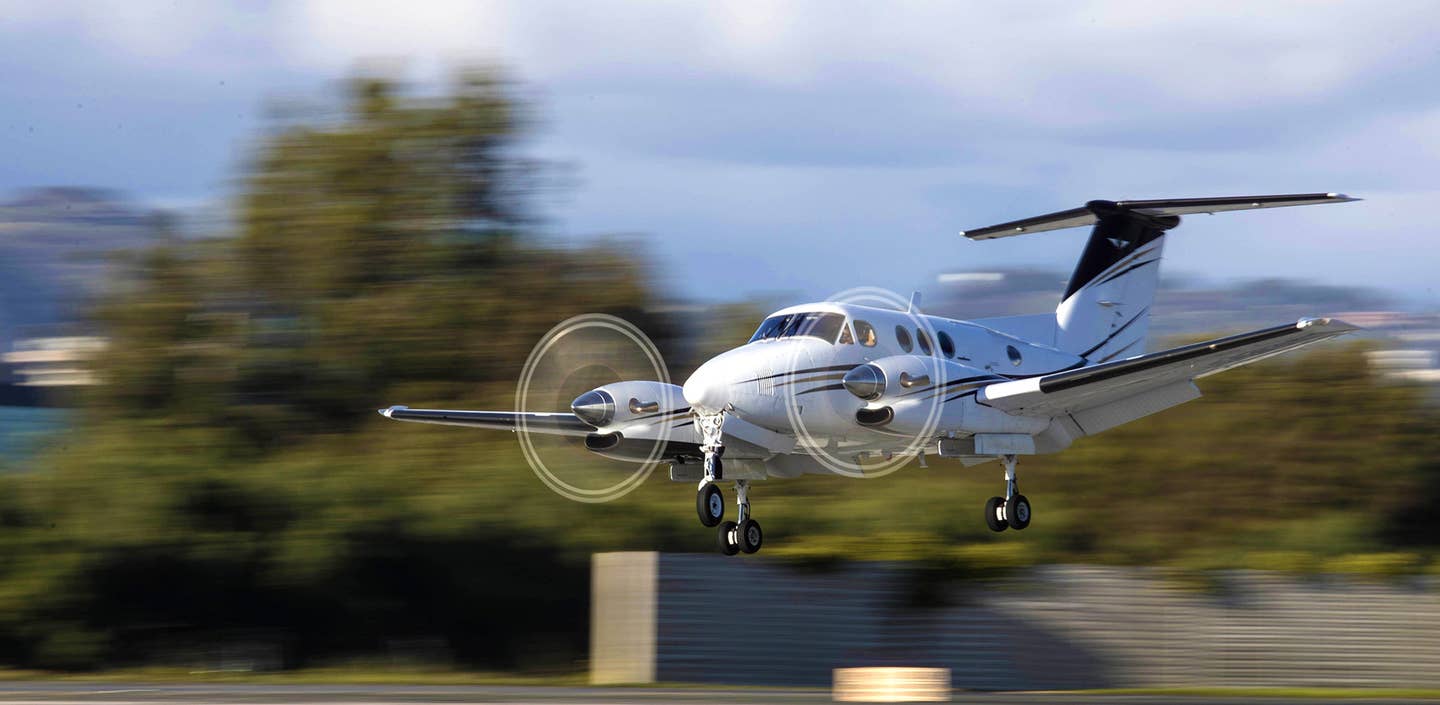
The Beechcraft King Air family of aircraft is used frequently by business aviation operators. NBAA
Three months into the COVID-19 pandemic, the National Business Aviation Association reports operators are slowing coming back online as the market and economy attempts to rebound.
“We’re seeing charter activity increase a bit faster than we expected, which is great news,” said Phil Derner, NBAA Western regional representative. “As the industry starts to slowly emerge, even though we still have COVID-19 lingering around us, it’s very important for us to determine best practices. We’re all kind of learning as we go during this crisis.”
During a recent NBAA News Hour webinar, panelist Jason Middleton, CEO of Silver Air outlined the work going on behind the scenes to bring business aviation back to life. “We’ve had to go through our entire business model and look at every single touchpoint from a health and safety perspective,” Middleton said. “As we begin to ramp back up, we realize this is a fluid situation, and identifying destination hot spots here and abroad is only part of the work. We’ve had to look at the big picture of what we are doing, and cleaning airplanes and using proper Personal Protective Equipment such as masks is only one small part of it.”
The segment of general aviation commonly referred to as “business aviation” might be larger than you realize, and a look inside NBAA’s Business Aviation Fact Book reveals some data, facts, and figures to illustrate the size of this important sector.
To understand the importance and scope of business aviation in the full context of our general aviation world, we first need to know exactly what this sector entails. NBAA’s No Plane No Gain industry advocacy program was created to bring public attention to issues and broadly defines business aviation as “a part of general aviation that focuses on the business use of airplanes and helicopters. The business aviation community consists of companies of all sizes that rely on many different types of aircraft–from single-pilot airplanes to turbine aircraft that fly internationally, to helicopters that survey rush-hour traffic–and the fixed-base operations and many other services that support flight operations at the nation’s 5,000 public-use airports. The vast majority of businesses in this community—97 percent—are small and mid-size businesses and other entities including nonprofit organizations.”
NBAA’s Business Aviation Fact Book expands greatly on this broad definition and lists a large amount of data that bring the wide reach of business aviation into a clearer focus. The Fact Book begins by clearing up any misconceptions about what types of airplanes and helicopters are serving business aviation users. “Although the worldwide fleet includes ultra-long-range business jets capable of flying 20 or more passengers nonstop between distant international business centers,” the Fact Book states, “the vast majority of business aircraft seat six passengers in a cabin roughly the size of a large SUV and fly average trips of less than 1,000 NM.”
Another common misconception about business aviation is that users are primarily giant Fortune 500 companies. In fact, per the NBAA Fact Book, only about three percent of the approximately 15,000 business aircraft registered in the U.S. are flown by Fortune 500 companies, while the remaining 97 percent are operated by a broad cross-section of large, medium and small organizations, including governments, universities, charitable organizations, and businesses.
Companies that utilize business aviation consistently place high on many respected “Best of” lists. Notable examples presented in NBAA’s Fact Book are Business Week’s “50 Most Innovative Companies,” which found that 95 percent of the S&P 500 companies on that list were business aviation users. Interbrand’s “100 Best Brands,” published similar results stating that 98 percent of the S&P 500 companies on their list regularly used business aviation. Likewise, 95 percent of S&P 500 companies on Fortune Magazine’s “50 World’s Most Admired Companies,” were business aviation users.
The Fact Book makes a strong case that business aviation is a major contributor to local and national economies. “Tens of thousands of pilots, maintenance technicians, schedulers, dispatchers, flight attendants, training professionals, airport employees, and other support personnel are employed in business aviation,” NBAA states, “and business aviation contributes $219 billion to U.S. annual economic output, and employs about 1.1 million people.”
While the competitive advantage a company sees through the use of a business airplane or helicopter is hard to quantify, study after study has concluded that those companies that do use this important sector of GA are more resilient, with employees who must travel by air becoming more productive. By avoiding scheduled airline delays, companies can move key people faster, often avoiding costly overnight stays, and while en route, those personnel can work in privacy to arrive at a destination prepared and ready to close the next deal.

Sign-up for newsletters & special offers!
Get the latest FLYING stories & special offers delivered directly to your inbox






